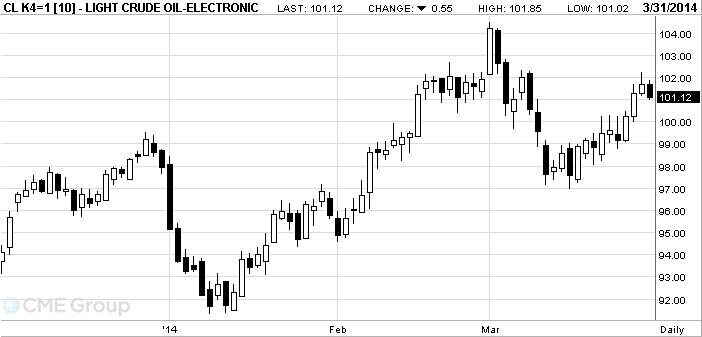West Texas
Intermediate crude traded near the highest close in three weeks as the U.S. and Russia
sought to defuse the crisis over Ukraine. Brent stayed near a 14-day
peak amid persisting supply disruption from Libya.
Futures
were little changed in New York,
headed for a quarterly advance of 2.9 percent. U.S. Secretary of State John
Kerry said Russia must
withdraw forces that are “creating a climate of fear and intimidation” as his
counterpart in the Kremlin urged the government in Kiev
to give Ukraine’s
regions more autonomy. Supplies at Cushing,
Oklahoma, the delivery point for
WTI, shrank last week for the eighth week to the lowest in two years, the
Energy Information Administration said.
“There is a
looming tension on Crimea,” said Abhishek
Deshpande, oil markets analyst at London-based Natixis. “WTI has been driven by
drawdowns in Cushing which are down 42 percent year-on-year. If it continues at
the current level of decline we could reach the operational lows come the
summer and see WTI cross over Brent as happened last summer.”
WTI for May
delivery was at $101.31 a barrel in electronic trading on the New York
Mercantile Exchange, down 36 cents, at 12:39 p.m. London time. The contract climbed 39 cents to
$101.67 on March 28, the highest close since March 7 and capping a second
weekly increase. The volume of all futures traded was about 33 percent below
the 100-day average.
Brent for
May settlement was at $107.81 a barrel, down 24 cents on the London-based ICE
Futures Europe exchange. The March 28 close was the highest since March 14. The
European benchmark crude was at a premium of $6.53 to WTI. The spread narrowed
for a third day on March 28 to close at $6.40.
Brent is
poised for a decline of 2.7 percent this quarter.

